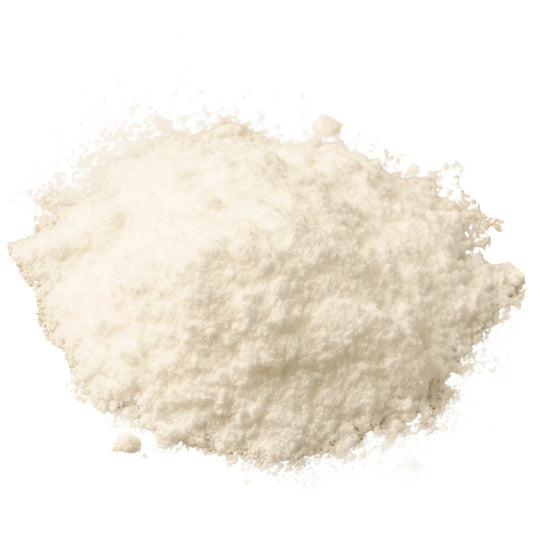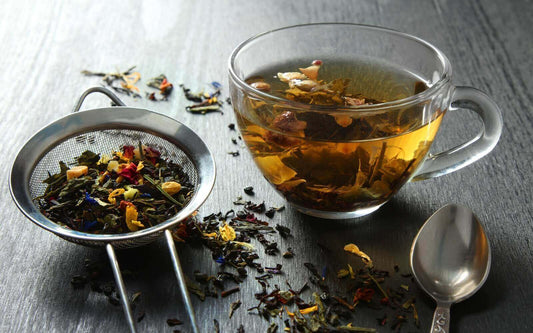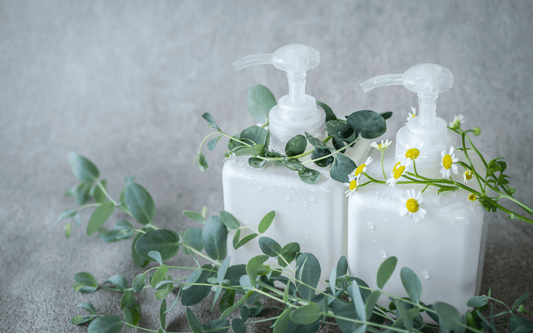
How to make your own Vegan Snail Gel
Aiden van WykBefore we begin: Big apologies to the emotionally perturbed Snail Community and if you are a Snail, I wish I could give you a slimy hug right now.
- Because I'm about to steal your Evolutionary Intellectual Biological Property.
What is Snail Gel?
Snail Mucin - or Snail Secretion Filtrate - is the secretion produced by Snails, particularly the Helix aspersa species (Garden Snails). The gel is a thick, mucus-like substance that snails naturally produce to protect and heal their bodies as they move across different surfaces.
Snail Gel for skin
Snail Gel is considered generally safe for use on sensitive skin (though patch testing is always a good idea) and used for anti aging, scars, stretch marks, even acne.
Snail Gel for hair
Can you use snail gel on hair? Surprisingly, yes!
Though it's not as widely known or used in hair care as in skincare, the primary components in snail mucin are effective for both skin and hair health. They can be good for moisture retention and scalp health. The proteins present repairing and strengthening your hair, making it softer, shinier and boosting elasticity.
How do we get Snail Gel?
I'll tell you what I'm thinking - in my head there's a scientist man in a white lab coat shaking, jaw clenched, veins bulging in his forehead and sweat escaping from every orifice while gripping with both hands and squeezing a BIG, FAT AND JUICY slug into a beaker. This is mostly wrong - but also a tiny bit accurate :)
- Extraction by Stress
Snails are subjected to physical stress like poking or agitation. Sometimes this involves salt exposure to stimulate mucin production.
This causes ethical concerns as it causes distress to Snails and can be fatal.
The likelihood of this being the extraction method is moderately high as it's common in mass produced and cheaper products. Especially in less regulated markets.
- Hand Collection
This is close-ish to what I thought initially - Mucin is manually collected/scraped from the Snail's body. This often involves gentle stimulation to encourage secretion
This is ethically humane but as you would expect is time consuming, inefficient and literally made at a snails' pace. All things considered not a great option for the free market.
This is limited to artisanal, small-batch products and has a very low likelihood of being the extraction method for Snail Gels. This can be found at small, local producers at extremely high prices, often sold directly by farms.
- Italian Method
Snails are placed in specialized chambers with mesh as gentle stream encourages natural mucin secretion.
This is ethically humane as there is no direct stress to Snails and is moderately likely to be found in the market. This is commonly sourced from European brands at a higher premium as it requires specialized equipment.
- Microstimulation Method
Gentle vibration or light electrical stimulation is used to mimic natural conditions that prompt mucin production.
When properly implemented this is considered to be humane and allows for efficient collection of Snail Gel without harming Snails. This is somewhat likely to be found in the market, especially in Korean Skincare and is moderately priced. This extraction method is used when the Snail Gel is labeled as "gentle extraction" or similar terms.
- Natural Extraction
Snails are placed on specially designed surfaces to extract the naturally secreted mucin as they move.
This is the most humane type of extraction and is unlikely to be found in the general market. These are limited, specialty products and is often used in small scale, artisanal production. If your Snail Gel is certified Organic this - was probably the extraction method.
Why does Snail Gel Work?
Snail Gel is produced by nature but is composed of Bioactive Compounds. This is the Biological Intellectual Property for us to steal!
- Hyaluronic Acid: Helps to hydrate and retain moisture in the skin, giving it a plump and youthful appearance.
- Glycoproteins: These are proteins bonded to sugars that assist in skin regeneration and repair.
- Chemical Exfoliants: Promotes exfoliation, brightening the skin and reducing fine lines.
- Antioxidants: Protect the skin from damage caused by free radicals, which accelerate aging.
- Allantoin: Known for its soothing and healing properties, it helps calm irritated skin and promotes wound healing.
What are the benefits of Snail Gel?
Snail Gel is often used in Korean skincare (in tandem with other products) and is popular for achieving the "glass skin" effect, where skin looks smooth, hydrated, and GLOWING.
- Hydration: It locks moisture into the skin.
- Anti-Aging: Helps to reduce wrinkles, fine lines, and other signs of aging.
- Healing: Promotes skin repair, making it ideal for people with scars, blemishes, or other skin damage.
- Exfoliation: Acids like Lactic Acid gently exfoliates dead skin cells, resulting in brighter and smoother skin.
Is Snail Gel Vegan? Is Snail Gel Immoral?
Snail Gel is not vegan. The Morality of snail gel is up for debate. Here is why:
Pro Snail Gel:
One could say that snails do not experience life as we mammals do and therefore morality does not apply.
Anti Snail Gel:
Another could say that the exploitation and cruelty towards any living thing is always immoral, especially if we could choose not to.
This is an interesting conversation to have but no matter where you find yourself on the spectrum of snail indignities, I suggest an easy solution to sidestep this morality mess - make your own Gel.
DIY Snail Gel
Using the ingredients already mentioned I cannot see why we would not create our own snail gel.
DIY Snail Gel Ingredients
Now, definitely we'll be including Allantoin, Hyaluronic Acid and Exfoliating Acids (we'll choose Lactic Acid, as it's easier to work with when combining with proteins).
For Glycoproteins Alternatives we've got options:
- Hydrolyzed Jojoba Protein: This protein is known for providing excellent moisture and softness to the skin and hair. It helps to form a protective barrier and locks in moisture.
- Vegetable Keratin: Vegetable keratin is a plant-derived version of keratin that helps to strengthen both hair and skin. It improves texture and skin resilience.
- Marine Collagen: Marine collagen is rich in amino acids and helps improve skin elasticity, hydration, and smoothness. It's excellent for anti-aging and repairing the skin barrier.
I love the way Marine Collagen does anti-aging and skin repair - but Marine Collagen is not vegan. Hence, I will choose Vegetable Keratin.
Is the Snail Gel Texture important?
You are free to use the ingredients and create a serum out of it. I however like the ease of application that comes with gels. I therefore chose to add Xanthan Gum as the texture would become slippery, slightly stringy and a smooth glide on the skin.
Going the extra mile
I know this is not necessary but as I looked into Korean Skincare I found Gotu Kola to be particularly interesting. Gotu Kola is known for its wound-healing, anti-inflammatory, and moisturising properties, as well as its high antioxidant content - all absolutely necessary for snail gel.
You could just use a water base, but if you see an opportunity to pack in potency - take it. This is why I chose to use Gotu Kola Water Extract instead of just Distilled water as the base. (How to make an extract here.)
Level up.
What other ingredients can you add to level up this Formulation?
Yes - this is a faux Snail Gel, but it also is a product of our own formulation. We can therefore add many more properties (as long as it is water based).
Botanical Extracts to consider:
- Green Tea Extract: Rich in antioxidants (polyphenols), anti-inflammatory, and soothing.
- Liquorice Root Extract: Brightens the skin, reduces pigmentation, and soothes irritation.
- Chamomile Extract: Anti-inflammatory, calming, and excellent for sensitive skin.
- Rose Water: Hydrates, soothes, and provides antioxidant benefits. It's good for balancing the skin's pH and promoting a radiant complexion.
- Aloe Vera: Provides deep hydration, calms irritated skin, and promotes healing.
- Seaweed Extract: Detoxifies, hydrates, and offers anti-aging properties. Seaweed is rich in minerals and antioxidants that help promote skin renewal.
- Ginseng Extract: Energizing and revitalizing, ginseng helps with anti-aging and brightening the skin. It can improve circulation and help the skin regenerate.
Active Ingredients to consider:
- Niacinamide (Vitamin B3): Brightens the skin, reduces pigmentation, improves skin barrier function, and controls sebum production. It's pairs well with other active ingredients like hyaluronic acid and glycolic acid.
- Panthenol (Pro-Vitamin B5): Deeply moisturizing, skin barrier-repairing, and soothing. It works well in synergy with humectants like hyaluronic acid.
Other Ingredients to consider:
- Glycerine: Classic humectant that attracts moisture to the skin, providing a more hydrated and plump appearance.
- Mandelic Acid: Even gentler than lactic acid, this acid is great for people with sensitive skin but still provides mild exfoliation and brightening.
- Vitamin E Oil: Increase the vitamin E percentage for better antioxidant protection
Note: Be mindful of potency when adding certain products together.


















